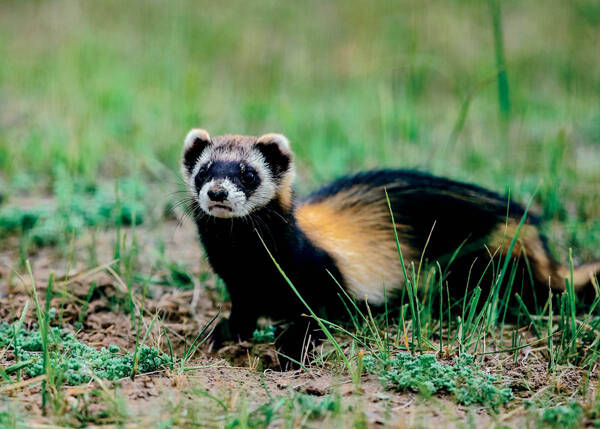Mustela eversmanii
IUCN
LCBasic Information
Scientific classification
- name:Mustela eversmanii
- Scientific Name:Mustela eversmanii,Aihu, ground dog, two-headed black, black-footed ferret
- Outline:Carnivora
- Family:mustelae genus
Vital signs
- length:31-56cm
- Weight:500-1000g
- lifetime:About 10 years
Feature
The body is cylindrical, with brownish yellow on the back and light brown on the sides.
Distribution and Habitat
The weasel is distributed in most of Europe, southern Siberia, Mongolia, Kashmir in Asia, and Jilin, Liaoning, Inner Mongolia, Hebei, Shanxi, Shaanxi, Qinghai, Xinjiang, Sichuan, Tibet, and Jiangsu in China.
The weasel lives in mountain broad-leaved forests, grasslands, shrubs, and near villages.
Appearance
The weasel is also called ground dog, two-headed black, black-footed weasel, and weasel tiger. It is 31-56 cm long, with a tail length of 11-15 cm and a weight of 500-1000 grams. It has a large body shape. The body is cylindrical. The snout is short and blunt. The neck is slightly thick. The length of the hair is different, the hair between the forelimbs is short, the hair in the middle of the back is the longest, and the hair at the base of the tail is second, which is slightly arched. The tail is nearly half the length of the body, and the tail hair is slightly fluffy. The limbs are short and plantigrade. The soles of the feet are covered with hair. The palm pads are well developed. The claws are thick and sharp. The penis bone is straight, thick at the base and thin at the end, and the shape is flattened laterally, with shallow grooves on both sides, and the end is bent to the back, slightly right-angled, similar to a "shovel".
Its back is brown-yellow, and most of the
Details
The scientific name of the mustela is Mustela eversmanii, and there are 5 subspecies.

The mustela usually moves alone. It is nocturnal, but sometimes it moves during the day or at dawn and dusk. It has a fierce temperament and moves quickly. It is good at swimming and climbing. Its vision and hearing are very developed. It mainly feeds on rodents such as mice, but also eats birds, bird eggs, small fish, frogs, crustaceans, and some plant berries, nuts, etc.
The weasel goes into heat and mates in February and March every year. They dig caves to build nests, or occupy the nests of rodents, marmots and other animals. The caves are generally composed of cave entrances, cave passages, expansions, nests and blind holes. The nests are relatively simple and slightly bedding. There is often a foul smell near the cave entrance. The gestation period is 35-41 days. Usually give birth in April and May. Each litter has 3-5 pups. The lactation period is 40-45 days. The newborn pups are covered with thin fluff and their eyes are closed. They can live independently at 2 months old. They reach sexual maturity at 9 months old.
Listed in the "National List of Terrestrial Wildlife with Important Economic and Scientific Research Value" issued by the State Forestry Administration of China on August 1, 2000.
Listed in the "World Conservation Union" (IUCN) 2012 Red List of Endangered Species ver 3.1-Least Concern (LC).
Protect wildlife and eliminate game.
Maintaining ecological balance is everyone's responsibility!








